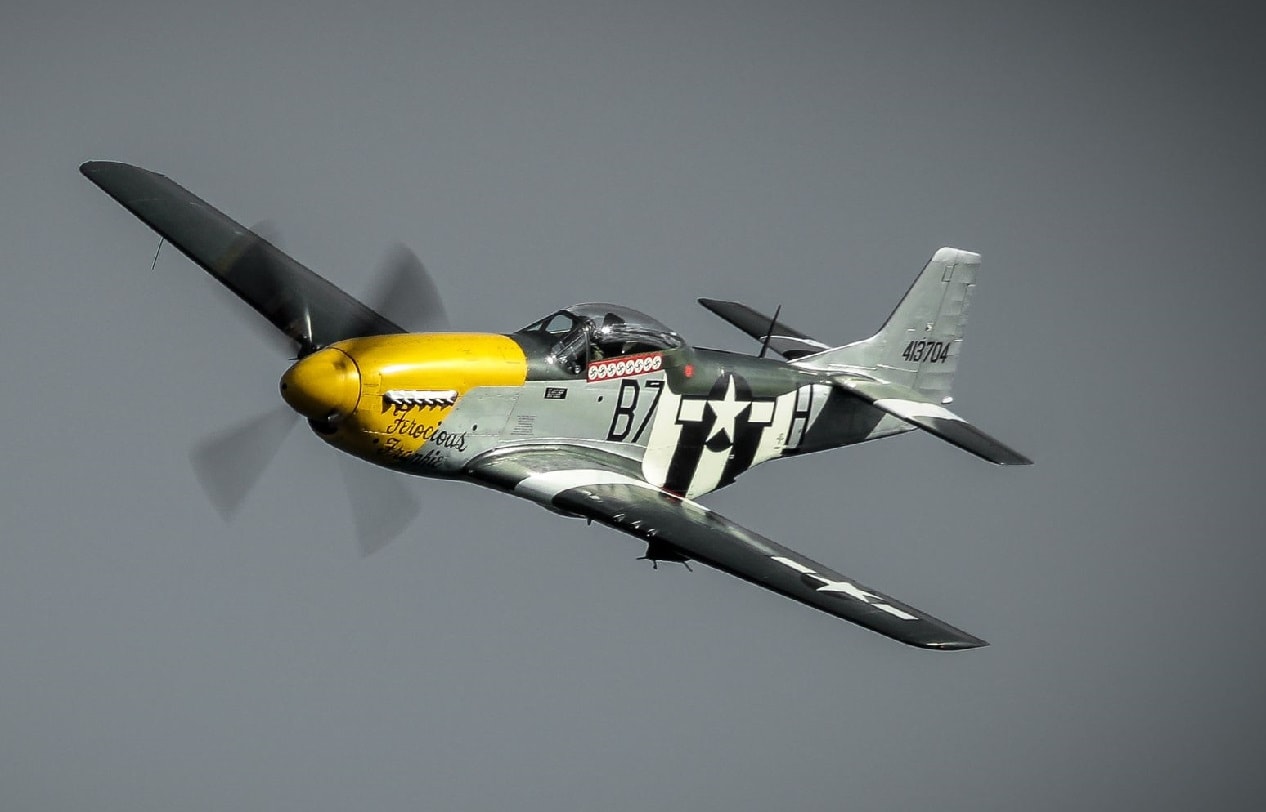Top Gun is back. Top Gun: Maverick, the sequel to 1986’s highest-grossing film, is closing in on a billion-dollar worldwide haul, and threatening to displace Doctor Strange in the Multiverse of Madness as 2022’s highest-grossing film. Tom Cruise’s latest flick is, obviously, jammed with military airframes.
The F-18 Super Hornet, which the U.S. Navy supplied for filming, is featured extensively; an F-35B is shown linking up to a carrier’s catapult system; CGI renderings of the Su-57 Felon, plus an SR-71 Darkstar-like jet are also featured prominently; the F-14 Tomcat makes an expected yet uplifting cameo. And one more plane appears, poignantly: a P-51 Mustang, which Cruise happens to own.
Plot spoilers ahead – Proceed with caution
In Top Gun: Maverick, when we first are reintroduced to Cruise’s character, Captain Pete “Maverick” Mitchell, after 36 years, he is tinkering with the engine of a P-51. The P-51 is housed within a hanger, from which pictures of Maverick, Goose, and Goose’s son Rooster, hang from the wall. Maverick grabs his leather jacket, unveils his 80s-era Kawasaki Ninja H2 motorcycle – now complete with a Sammy Hagar “I Can’t Drive 55” bumper sticker – and rides off.
At the film’s conclusion, Maverick and Rooster return to the P-51 hangar where they continue restoring the old warbird. Maverick reunited with his love interest, Penny Benjamin (“Penny Benjamin?”), played by a gracefully-aging Jennifer Connelly, and the two take a sunset cruise in the P-51.
The scene – and the plane – are gorgeous. To shoot the scene, Cruise pilots the plane, which he has owned since 2001 (price tag: $4 million). The end result is a touching conclusion to a film that has become a pop culture phenomenon – and a touching highlight of the P-51, one of aviation history’s most celebrated piston-engine fighter aircraft.
The Mustang is the Ultimate Escort Airframe
Developed by North American, the P-51 Mustang is a single-seat fighter used during World War II and the Korean War that proved invaluable as a bomber escort. As U.S. bomber runs forged deeper and deeper into occupied German territory, existing fighter escorts, like the Lockheed P-38 Lightning, lacked sufficient range to escort the bombers.
Predictably, bomber casualty rates increased. The British, feeling unremorseful after suffering through The Blitz, were proponents of nighttime bombing campaigns, which could be conducted in relative safety under cover of darkness without fighter escort. The Americans, on the other hand, felt the nighttime bombings were immoral (odd, given the ensuing firebombings) and opted not to partake. Instead, the U.S. created a fighter that could escort the bombers all the way into German territory and back. The result was the P-51.
The Mustang has a 32-foot-long airframe with one Packard (Rolls Royce) V-1650-7 Merlin 12-cylinder engine providing 1,720 horsepower. The Merlin engine allowed for a 440-mile-per-hour max speed and, with external fuel tanks, a range of 1,650 miles. The P-51 had a service ceiling of 41,900 feet and could climb at 3,200 feet per minute.
To dissuade the Luftwaffe, the P-51 carried six .50 caliber AN/M2 Browning machine guns with 1,840 rounds of ammunition. The P-51 could also be outfitted with bombs and HVAR rockets. With impressive specifications, the P-51 performed admirably – helping bombers to safely deliver their payloads and return to base intact. The Mustang has since become an iconic aircraft, emblematic of the Allied war effort, and the bygone era of propeller-driven fighter aircraft.
Harrison Kass is the Senior Defense Editor at 19FortyFive. An attorney, pilot, guitarist, and minor pro hockey player, he joined the US Air Force as a Pilot Trainee but was medically discharged. Harrison has degrees from Lake Forest College, the University of Oregon, and New York University. He lives in Oregon and listens to Dokken. Follow him on Twitter @harrison_kass.

